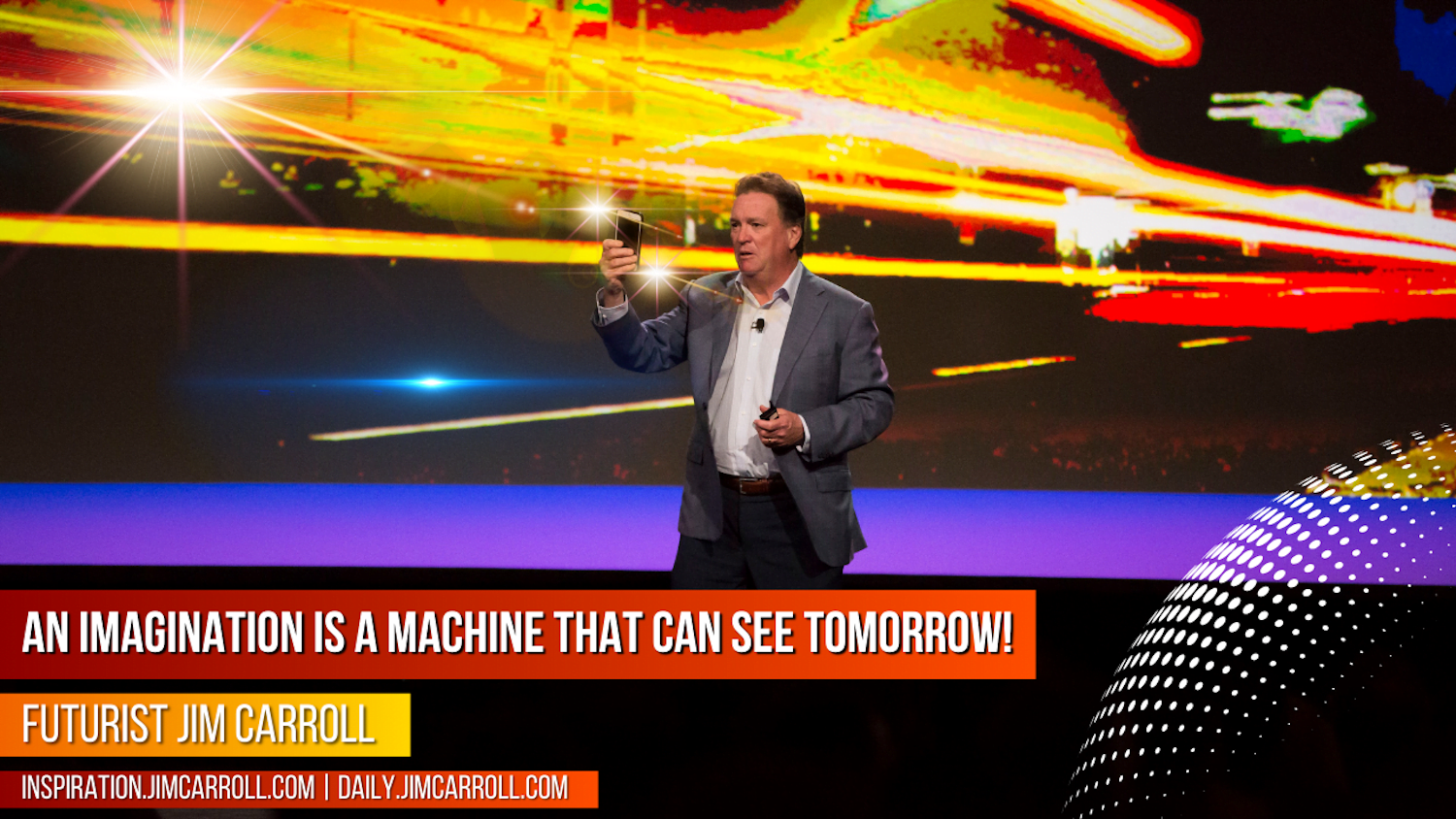“An imagination is a machine that can see tomorrow!” – Futurist Jim Carroll

Part of the art of helping people understand tomorrow comes from encouraging them to think about what they might encounter once they get there.
That’s what I’m doing in this photo from a few years ago in Chicago, and that’s what I was doing yesterday at an agriculture conference. My wife – who travels with me to all my events because road life is often just not fun – was asking me how my talk went. My response? When people are engaged, such as by taking pictures of your slide deck, you know you’ve got their attention. With that in mind, this floated across my social feed yesterday after the event. Clearly, it resonated.

What’s going on here with this slide from my deck?
Two things.
First, it’s about this moment in my talk that I am holding up my iPhone, and asking the audience to imagine what they might be doing with it just 5 short years from now. I suggest that 10 or 15 years ago, they didn’t have such a device in their life, and had no idea how important it would become to them. There are now so many apps on our phones that are indispensable to our lives today – maps, music players, health care tracking apps, and more. Then I suggest they imagine that same phone 5 years out – loaded with a whole series of new apps based on AI. They’ll be doing things in a few years that they aren’t yet aware of, and yet will be indispensable to them!
Second, I give them an example of this type of thinking – by bringing up this picture of this diseased strawberry.

I show them how I use ChatGPT to examine the picture and identify the type of disease that is found on the strawberries in question. I tell the audience to imagine the world of agriculture just a few years out, in which they’ve got a magical device in their pocket that can identify plant disease, growth rates, maturity, and other factors.

Will this happen? Most certainly – because I then walk a series of slides that show how quickly this capability is coming together. My examples involve a company called Keymakr, which is in the business of what is called ‘data annotation’ – in essence, developing tools that help various AI systems identify and interpret the world around us. (ChatGPT does this through their own data identification tools.)
Precision agriculture uses Al technology to aid in detecting diseases in plants, pests, and poor plant nutrition on farms.
Al sensors can detect and target weeds and then decide which herbicides to apply.
Preparing accurate training data is essential, as the quality of the training data directly affects the performance of crop disease detection Al.

Growth and maturity?
Fruit maturity can be seen from skin color and size. Color is one of the most easily recognizable ways of determining whether fruit is ripe. Keymakr can label level a ries ese ento classie or ini stages, The quarty a grening data
precisely label your training images and video.Different crops have different ripening processes, therefore ripeness detection training data has to be custom made for each ML model.
Keymakr specializes in image and video annotation solutions for Al in agriculture.

Crop development? We can do this too:
Real-time information on crop development
Monitor and label stages of growth
Monitor plant healthImmediate detection of:
• Poor water availability
• Nutrient deficiency (e.g. artificial fertilizer or manure)
• Uncontrolled use of chemicals (toxicity)
• Fungal, bacterial or viral infection
• Attack from insects or other organisms, above or below the ground

Think about what is happening here – by merely looking at a picture, we can undertake massive identification of what is going on. This type of vision insight is coming to every industry, from agriculture to healthcare, manufacturing to construction. The future is coming at us quicker than we think, and it is by imagining what it might look like when we get there that we can best understand where we are going.
That comes from accelerating your imagination with the real-world research that is underway – and which will become a part of our world in just a few short years.




GET IN TOUCH
Jim's Facebook page
You'll find Jim's latest videos on Youtube
Mastodon. What's on Jim's mind? Check his feed!
LinkedIn - reach out to Jim for a professional connection!
Flickr! Get inspired! A massive archive of all of Jim's daily inspirational quotes!
Instagram - the home for Jim's motivational mind!